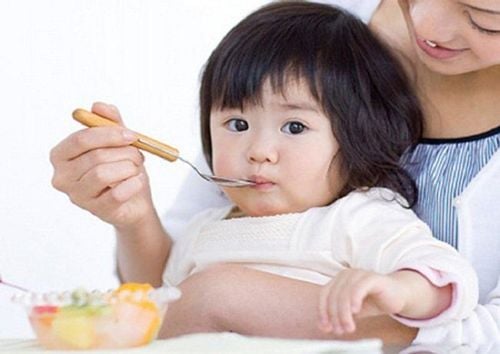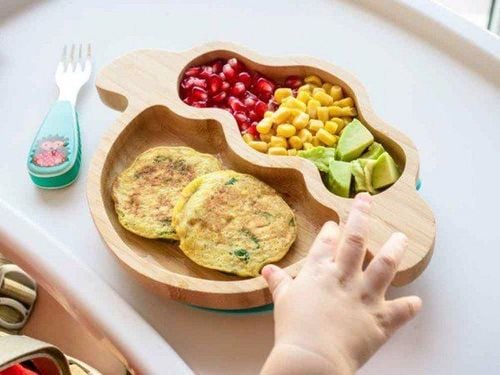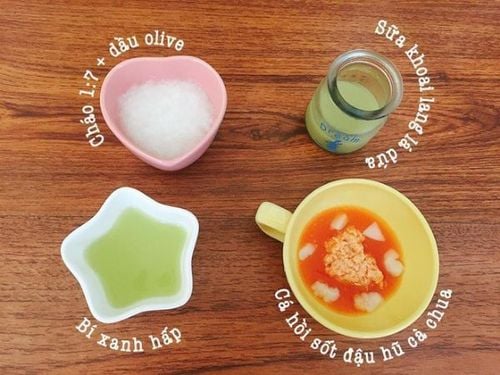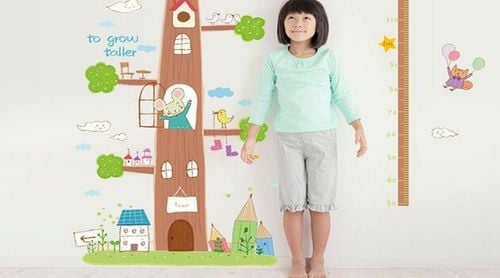This is an automatically translated article.
At 6 months old is also the time when babies begin to get used to foods other than breast milk. The baby's weaning stage is considered as a step marking the development of a new stage. However, the implementation of weaning for children is reasonable, not all parents know. In particular, each method of weaning always has its own advantages and disadvantages.1. Time to carry out weaning for children
Parents need to pay attention and understand when to start giving solid foods to their children. Because the right time will help children absorb nutrients from food better. In some cases, parents who do not have enough knowledge to introduce solid foods to their children can start feeding them early to improve their children's condition. However, this backfires causing a number of problems affecting the health of the child:Children who eat solids too early will make the child's stomach and kidneys easily damaged by these organs. not fully developed and at the same time overactive. Moreover, if giving solid foods too early, then the child's digestive system does not secrete enough mucus as well as enzymes to help break down protein and fat and lead to overworked organs. Early weaning puts children at high risk of digestive disorders, diarrhea or constipation due to the immature digestive system. When babies eat solid foods early, their stomach has to contract strongly while the surface mucosa and mucus layer are still thin, causing stomach damage and leading to the cause of stomach diseases in children. grow up. Infants who eat solids too early can also make them lazy to breastfeed, leading to a shortage of nutrients and essential substances in breast milk, which will seriously affect their resistance as well as their development. young. Because the baby's jaw and tongue muscles are not yet able to coordinate properly at birth, introducing solids too early will make the baby more likely to choke or choke. Through the above analysis, it can be seen that how to give solid foods to children as well as when to eat solids is very important for children. And according to the recommendations of the World Health Organization (WHO), babies should only eat solid foods when they are 6 months old. Because at this time, the baby's digestive system has developed relatively completely and can absorb complex nutrients.
2. Analyze the advantages and disadvantages of the baby's weaning methods
2.1. The traditional method of weaning is considered the oldest method of weaning used in Vietnam. When children transition to solid foods, they start eating with puree powder with foods such as vegetables, fish, meat... When children enter the teething age, they can switch to porridge or eat porridge. foods that can be pureed.The traditional method of weaning is believed by many parents that this method is no longer suitable for modern trends. However, many children still apply traditional weaning.
The advantage of the traditional weaning method is that it helps parents save time because the process of preparing baby food is quite simple and suitable for many busy parents. At the same time, the baby's food, after pureeing, helps the child's food digestion process better, does not affect the ability to digest as well as absorb nutrients into the child's body.
The disadvantage of the traditional method of weaning is that the baby eats a lot of pureed food, so it may not develop the ability to eat rough food as well as the ability to chew and swallow. In addition, with the traditional method of weaning, it will be based on processing food together, so it makes it difficult for children to feel the unique taste of each food, thereby not stimulating children to eat, even with food. This can lead to children being anorexic and picky about food later in life.

Cho bé ăn dặm kiểu truyền thống giúp cha mẹ tiết kiệm thời gian
Moreover, parents also practice for children to eat light, eat vegetables and then eat meat and fish so that children get used to foods gradually. And children will focus on the meal rather than being forced to eat.
The advantage of the Japanese method of weaning is that it helps children to be able to use solid foods earlier than other methods including the traditional weaning method. When children eat food separately, it helps children get used to the taste of the food, helps stimulate their taste buds as well as limit their anorexia or picky eaters later on.
Applying the Japanese weaning method to help children eat lighter and facilitate their kidneys not to work too hard. Besides, when eating this way, children will have a comfortable mentality, no pressure and can eat more.
The disadvantage of the Japanese weaning method is that parents will take time to teach their children to hold a spoon, spoon, and prepare food for the child. Therefore, this method is not feasible for busy parents because it requires a lot of time and meticulousness in preparing food for children...
2.3. BLW Self-Directed Weaning for Children Self-directed weaning allows children to experience different foods, flavors, sizes and shapes for themselves. Children learn to eat raw foods like adults from the first time they introduce solid foods. The main purpose of this method is to help children practice the ability to chew, swallow and taste food. Babies still get nutrients from breast milk.
Self-directed weaning method will not stir flour, or dilute porridge, children will not use spoons, forks... but children will use their own hands to hold and feel baby foods use. At that time, children can use whatever foods they like.
Advantages of blw weaning helps children discover the taste, texture and color of food. At the same time, this method also helps children increase reflexes and chewing skills. A remarkable point of this method is that children can eat according to their preferences and needs. Moreover, parents do not need to spend too much time preparing daily menus for children.

Phương pháp cho trẻ ăn dặm BLW giúp trẻ tự khám phá mùi vị, kết cấu, màu sắc món ăn
In short, each method of weaning has certain advantages and disadvantages, so instead of forcing children to eat according to a certain method, parents should flexibly apply methods of feeding children according to their ability. abilities and interests of children to be more interested in eating.
The period of baby eating solid foods is an extremely important period to help children develop comprehensively. Children who do not eat properly are at risk of micro-mineral deficiencies, causing anorexia, growth retardation, malabsorption, etc. If they notice the above signs, parents should supplement their children with supportive products. The supplement contains lysine, essential micro-minerals and vitamins such as zinc, chromium, selenium, and B vitamins to help fully meet the nutritional needs of children. At the same time, these essential vitamins also support digestion, enhance nutrient absorption, help improve anorexia, and help children eat well.
Parents can learn more:
Signs of zinc deficiency in children
Micronutrient deficiency and failure to gain weight in children
Please regularly visit Vinmec.com website and update useful information to take care of your child. Take care of the baby and the whole family.













